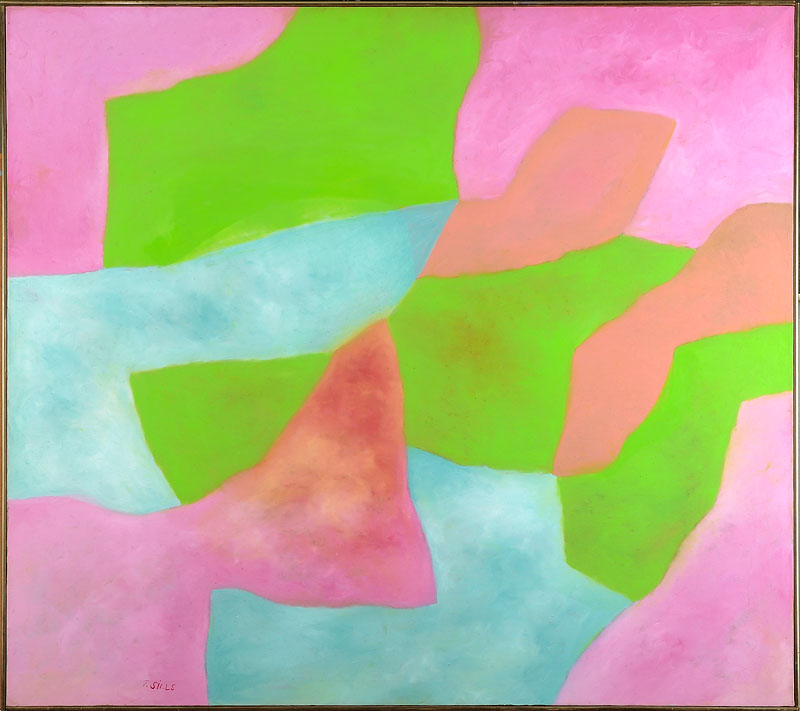Thomas Albert Sills (1914-2000)
Thomas Sills was born and raised in Castalia, North Carolina. Before he got involved with painting, he worked in a greenhouse in Raleigh, North Carolina, where the color around him made a strong impression on him. Once in New York, he worked on the docks, as a janitor, and as a deliveryman.[1]
Sills spent most of his creative life in New York City, deeply rooted in the artistic trends as well as cultural issues from the early 1950s to 1970s. He knew Willem de Kooning who visited his studio and told him not to throw anything away before anyone had seen it.
Others in the NY circle gave him advice. At the time of his first solo show, Barnett Newman sent him a letter of congratulations.[2] His friendships with Newman and Mark Rothko placed him at the intellectual center of the Abstract Expressionist movement, but like de Kooning, Arshile Gorky and Franz Kline, Sills believed that it was not necessary to explain his art; he painted what he felt and it came from within.[2]
Sills began his work as a fine artist when he was in his mid-thirties, about the time he married the mosaicist Jeanne Reynal. Essentially self-taught and inspired by Reynal's collection of abstract art, he began working with the materials he found in her mosaic studio, but soon branched out to oil on wood as well as canvas.
Through his exploratory approach to materials, Sills was able to release phantasmical abstract paintings. Intrigued by the light quality of mosaics, a similar luminosity emerged in Sill's bright oil compositions. His provocative handling of color and innovative use of media attracted the attention of the New York avant-garde.
Sills's regular presence in the art world of the 1950s through the early 1970s as an African-American painter situated him as an integral element of the mainstream and African-American art. Thomas Sills perceived his art to be beyond the political. He found in Art a form of expression for the dynamism that escapes any formal constraints. Sills' work was highly intuitive and he too sought inspiration from primitive art—in the 1950s he made frequent trips to Mexico to study the sculptures, frescos and architecture of Chiapas and the Yucatan.
At the peak of his career in the 1960s and 1970s, his work was widely shown in museums. He had four solo shows at Betty Parsons Gallery, was regularly featured in art journals and is in museum collections. Today, there is a renaissance of the popularity of his works. He is being exhibited in many shows, most recently African American Abstract Masters at the Anita Shapolsky Gallery, New York and Abstraction Plus Abstraction at Wilmer Jennings Gallery at Kenkeleba, and Encore, Five Abstract Expressionists at Sidney Mishkin Gallery of Baruch College, The City University of New York in 2006.
His work has been acquired by over 30 museums, including The Metropolitan Museum of Art, The Whitney Museum of American Art, the Museum of Modern Art, The Los Angeles County Museum of Art, the San Francisco Museum of Art, the Brooklyn Museum of Art, the High Museum of Art, the Studio Museum in Harlem, and the Newark Museum.[1][3][4]
Bio courtesy of Wikipedia. Link to full bio: https://en.wikipedia.org/wiki/Thomas_Sills

Pleasant Hills
Oil on canvas
42x49 inches
1966
Signed
Photo credit: John Wilson White Studio